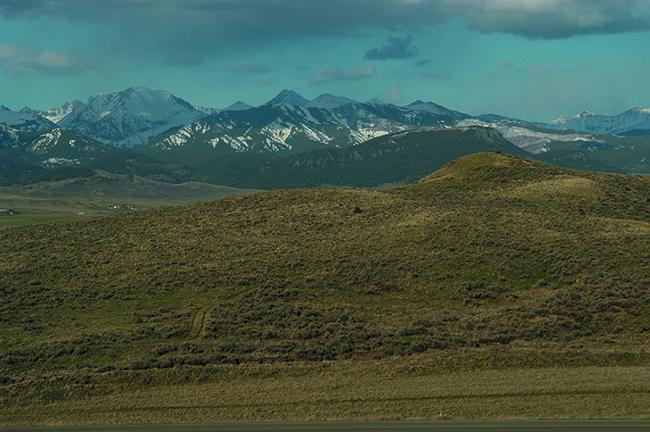The Oldest Grave in North America
According to archaeologist Larry Lahren of Livingston, a two-year-old child and dozens of stone artifacts were buried together by late ice-age hunters 11,000 years agoat the base of a rocky bluff along a bend in the upper Shields River. Lahren believes the bluff itself played an important role in the lives of the big-game hunters who lived in the Shields Valley as the last ice age drew to a close, and he says the burial site is a landmark in the world of archaeology.
“It’s the earliest documented and dated evidence of religion in North America. . . in the New World actually,” said Lahren of the Anzick site (named for the family owning the land where the old grave is located, about a mile south of Wilsall). Lahren says that the Anzick site as a whole provides archaeologists with a nearly perfect picture of the Clovis culture when big game like the mammoth and the mastodon were dying out and life was changing in North America for both man and beast.
Wilsall-area residents Ben Hargis and Calvin Sarver came across the burial site in 1968 as they were digging out talus and reported that “they were up to their elbows in that red stuff” once they began examining what they had uncovered. Lahren says that over 100 red ocher-covered stone and antler artifacts were recovered from what the discoverers described as a burial pit, along with the bones of a two-year-old child that radiocarbon-dated at around 11,000 years old.
“The artifacts were not contained in a cache, they were part of the burial,” Lahren stresses. He says that the location of the burial and its ritualistic nature, the span of time between the recovered human remains, and the appearance and location of the rocky bluff itself all indicate that the Anzick site was an important place to the Clovis people occupying the Shields Valley. The bluff also reveals at least one bison kill site, and Lahren says that there are also a few ancient eagle traps on a nearby hillside, indications that the area continued to be used by native peoples long after the Clovis era, making the Anzick site “a pretty sacred place all around.”
“All the major drainages and trails come together at this highest point on the valley floor,” says Lahren. “It’s a natural gathering spot.” He also says that the Shields Valley was a virtual island of prosperity for the hunter-gatherers who utilized its resources 10,000 years ago.
“Life was pretty tough north of the Missouri,” says Lahren,” but once they got here they didn’t have to follow the big game…the big game came to them, because for one thing the Shields Valley had everything the animals needed. I just have this idea that when people came down the northern corridor, crossed the Missouri, and entered places like the Shields Valley, they stayed here generation after generation. They didn’t have to leave… the mountains held in the big game like big fences.”
Lahren discusses the Anzick site and the greater Yellowstone area in his new book Homeland: An Archaeologist’s View of Yellowstone Country’s Past (2006, Cayuse Press), which hits bookstands in December.
Montana Battlefields: Native Americans and the U.S. Army at War
Barbara Fifer
Farcountry Press
If tales of taming the Wild West get your blood pumping, then the new novel from Barbara Fifer is a must-read. Montana Battlefields: Native Americans and the U.S. Army At War details the many Dakota Territory battles from 1806-1877 between Native Americans and the soldiers of the United States Army.
Montanan Barbara Fifer is a distinguished veteran of historical and geographical literature. Her extensive research on the many battles of the “Indian Wars” is evident. As she describes the battles, you can practically hear the gunshots of the cavalry and the war cries of the Nez Pierce. Each battle includes a map with the landmarks and towns of today, which helps put everything into perspective.
Fifer aims to take a neutral stance and to tell each side of the story. But when reading about massacre after massacre of the Native Americans, it becomes hard to see the history in an unbiased way—white-man’s guilt sets in. The book is good and definitely worth the read, just don’t expect to feel uplifted by the end.
—Amber Patterson






